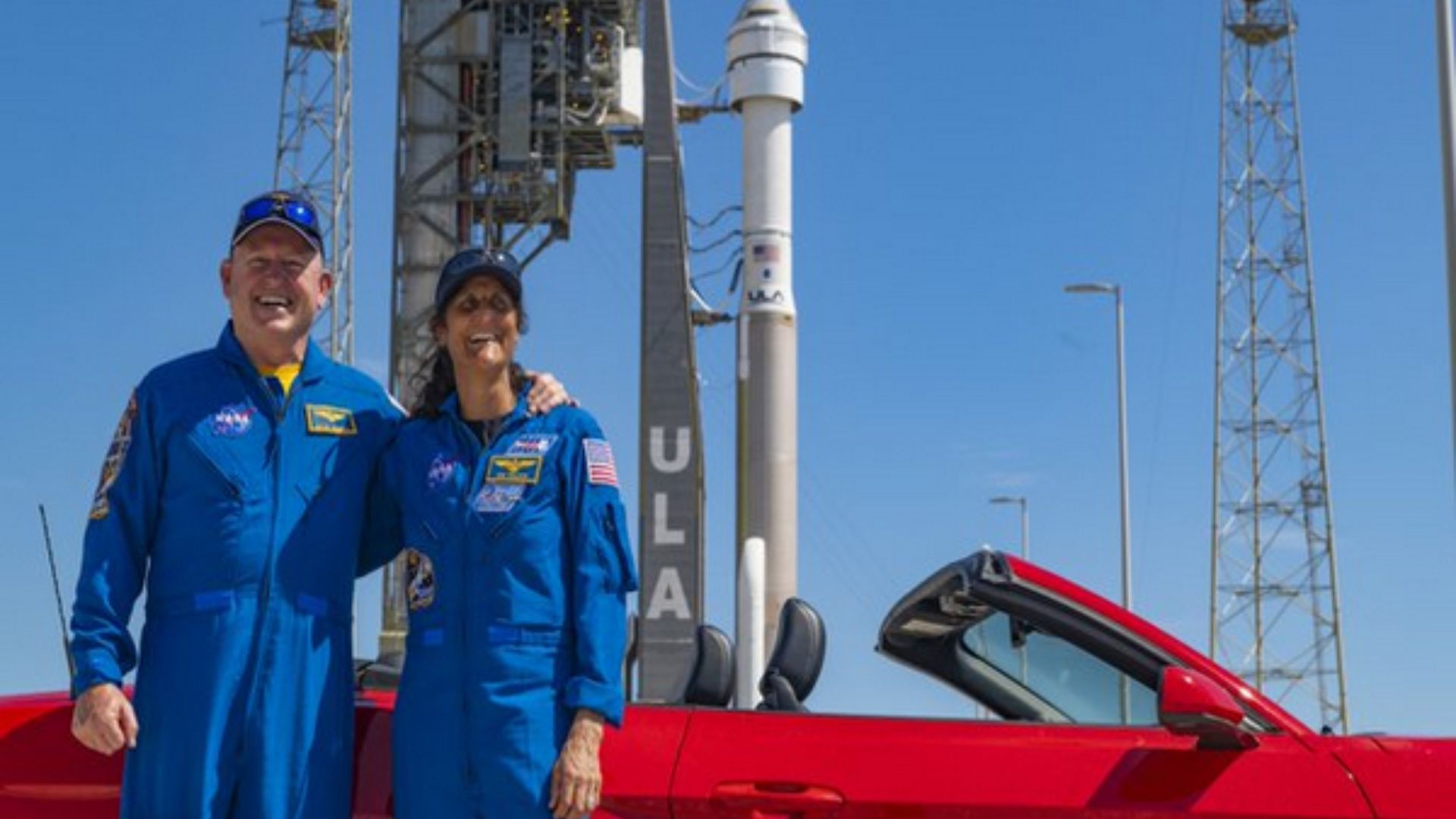NASA has declared that on May 10, the Boeing Starliner carrying the two astronauts will try to launch atop the ULA rocket.
“We are targeting no earlier than Friday, May 10, for the launch of the agency’s Boeing Crew Flight Test to the International Space Station, pending resolution of the technical issue that prevented the May 6 launch attempt,” Nasa said.
The delay, it continued, enables crews to finish data analysis on a pressure regulating valve on the liquid oxygen tank of the Centaur upper stage of the Atlas V rocket and assess if the valve has to be replaced.
Today Early in Morning the launch of Boeing’s Starliner spacecraft, which was set to carry NASA astronauts Sunita Williams and Barry Wilmore to the International Space Station (ISS), faced a delay on Monday due to a valve issue in the upper stage of the rocket tasked with propelling it to space.
The decision to postpone the launch was made about two hours before the scheduled liftoff from the Cape Canaveral Space Force Station in Florida, USA, by Tom Heter III, the director in charge of the launch for the rocket company United Launch Alliance.
According to NASA’s announcement on the social media platform X, the problem was pinpointed to an oxygen valve on a section of ULA’s Atlas 5 rocket. Consequently, NASA, Boeing, and ULA jointly decided to cancel the launch opportunity on May 6 for the agency’s Boeing Crew Flight Test to the ISS due to an observation of a faulty oxygen relief valve on the Atlas V rocket’s Centaur second stage. The astronauts, Wilmore and Williams, disembarked from the Starliner spacecraft at Space Launch Complex-41 at Cape Canaveral Space Force Station in Florida and returned to the astronaut crew quarters.
This mission would have marked the first human crewed flight for Starliner, with Sunita “Suni” Williams, of Indian origin, piloting the craft alongside fellow NASA pilot Barry “Butch” Wilmore. Starliner, designed by Boeing, aimed to compete with Elon Musk’s SpaceX Dragon capsule, which completed its crewed flight test in May 2020. Since then, SpaceX has primarily handled NASA’s crew transportation requirements.
Despite the setback, the seasoned astronauts maintained their composure, understanding the patience and resilience required for space travel. Clad in their distinctive Boeing pressure suits, Wilmore and Williams awaited updates on the next launch window, prepared to embark on their celestial journey at the earliest opportunity.
The Atlas 5 rocket, known for its reliability, was poised for its milestone 100th flight, intended to launch Boeing’s Crew Space Transportation (CST)-100 Starliner spacecraft. After separation from the Atlas 5, Starliner’s engines were supposed to propel it the rest of the way to orbit and onward to the International Space Station.
The Atlas 5 has a successful track record, having launched scientific spacecraft to Mars on five occasions, in addition to missions to the Sun, the Moon, Jupiter, the Asteroid Bennu, and Pluto. It comprises two main components: a booster and Centaur, its upper stage. Starliner sits atop Centaur, which rests on the booster. The booster powers the launch, while Centaur separates during flight, propelling Starliner into orbit before it separates and operates independently.
Both Williams and Wilmore have extensive space experience. Williams, selected as an astronaut by NASA in June 1998, has spent a total of 322 days in space on two missions and conducted seven spacewalks accumulating over 50 hours. Wilmore, aged 61, has logged 178 days in space and participated in four spacewalks totaling over 25 hours.
Boeing’s development of Starliner faced numerous delays and setbacks over several years. Additionally, Boeing as a company has grappled with scandals in its aircraft division, affecting its reputation in the aerospace industry.
A successful Crew Test Flight could pave the way for Boeing to conduct routine trips to the space station on NASA’s behalf. Boeing has already outlined plans for six manned missions over the next six years, coinciding with the projected end of the ISS’ operational lifespan.
NASA intends to utilize both SpaceX’s Dragon and Boeing’s Starliner for astronaut missions to the ISS at least every six months from US soil. Both companies were tasked by NASA in 2014 with sending commercial crew missions to the ISS. Boeing received over USD 4 billion in US federal funds for Starliner’s development, while SpaceX received around USD 2.6 billion.























